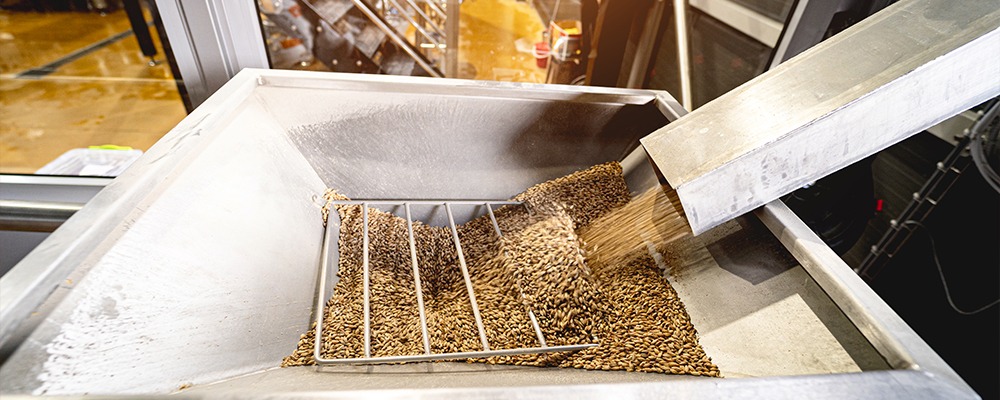In the ever-evolving world of food science and grain technology, the spotlight increasingly falls on enzymes as powerful biocatalysts in refining, enhancing, and transforming cereal-based products. Among these, xylanase stands out as a game-changer in cereal processing, particularly in the modification of fibre to achieve better texture, digestibility, and overall nutritional value. From flour milling to baked goods and breakfast cereals, xylanase has redefined how food technologists approach cereal refinement.
Understanding the Basics: What is Xylanase?
Xylanase, a type of hemicellulase, is an enzyme that breaks down xylan—a major component of hemicellulose found in plant cell walls. Xylan itself is a polysaccharide composed of xylose units and is most abundantly found in cereals such as wheat, barley, and oats. Due to its complex structure, xylan can impede the functionality of dough or reduce nutrient bioavailability in certain cereal-based foods.
Xylanase breaks these complex carbohydrates into simpler, more manageable sugars. The result? Improved dough handling properties, enhanced loaf volume, and better crumb structure in baking, as well as superior fibre modification in processed cereal foods. This transformation is critical for both product quality and consumer health, as it leads to more soluble fibre content, improved gut health benefits, and greater accessibility to nutrients.
The Role of Fibre in Cereal Products

Fibre is a key component in cereals, offering both structural benefits and significant nutritional value. However, not all fibre is created equal. Insoluble fibres, while beneficial for digestion, can cause processing issues or result in undesirable textures in final products. Soluble fibre, on the other hand, is prized for its cholesterol-lowering effects, improved glycaemic response, and prebiotic potential.
The challenge lies in modifying insoluble fibre without diminishing its health benefits—a task where xylanase proves immensely useful. By breaking down the hemicellulose matrix, xylanase not only reduces the mechanical resistance of the cereal grain but also increases the solubility and fermentability of fibre, effectively converting ‘bulk’ into beneficial matter.
Xylanase in Flour Milling and Dough Processing
One of the most widely recognised applications of xylanase is in flour milling and dough improvement. In milling, xylanase is used to reduce the viscosity of flour extracts, making the flour easier to process and enhancing the performance of the end product. It leads to a cleaner, more consistent flour profile which, in turn, supports better baking outcomes.
When incorporated into dough, xylanase acts on the arabinoxylans present in wheat flour. These polysaccharides absorb water and affect dough rheology. By partially hydrolysing these compounds, xylanase helps improve dough machinability, gas retention, and loaf volume—factors critical to industrial-scale baking operations. Furthermore, the softer crumb structure and improved freshness associated with xylanase use translate into better consumer appeal and extended shelf life.
Benefits Beyond Baking: Cereal Processing and Fibre Enrichment

Beyond bread and pastry applications, xylanase has a growing role in broader cereal processing operations. In breakfast cereals, for instance, xylanase aids in the thermal stability and crispness of extruded products, as well as the enhancement of dietary fibre content without compromising texture. In noodle and pasta manufacturing, where dough extensibility and resilience are key, xylanase supports a smoother processing experience and better final product quality.
Importantly, xylanase enables targeted fibre enrichment, a major trend in today’s health-conscious market. Modern consumers are seeking foods that contribute to digestive health, weight management, and disease prevention. Xylanase, by increasing soluble fibre levels and improving prebiotic functionality, allows manufacturers to formulate products that tick all these boxes while still being tasty and appealing.
Tailored Applications for Wholegrain and High-Fibre Products
Wholegrain and high-fibre products are notorious for their dense texture and bitter flavour profile—attributes that have historically hindered consumer adoption. Xylanase helps overcome these limitations by modifying the bran structure and increasing solubility. This results in softer textures, lighter colours, and more palatable tastes, making wholegrain breads and cereals more enjoyable without reducing their nutritional value.
In addition, xylanase supports uniform hydration of dough, which is particularly important when dealing with wholegrain flours that typically absorb water unevenly. By promoting better integration of water into the dough matrix, xylanase improves elasticity and dough handling, essential in automated or large-scale processing environments.
Environmental and Economic Impact
From an operational standpoint, using xylanase in cereal processing also delivers sustainability benefits. It allows for better utilisation of raw materials by increasing yield and reducing waste, especially in flour extraction. In energy-intensive processes like extrusion and baking, xylanase can help reduce processing time and energy input due to improved dough consistency and handling characteristics.
Economically, the enzyme supports cost-effective production by reducing reliance on chemical additives or improvers, many of which are being phased out due to health or regulatory concerns. Moreover, consistent enzyme action ensures reliable batch-to-batch quality, decreasing returns and improving brand reputation.
Safety and Regulatory Acceptance
Xylanase, especially when produced through fermentation with GRAS (Generally Recognised As Safe) microorganisms, is widely accepted across global food regulatory bodies including EFSA (Europe) and FDA (United States). With increasing consumer demand for clean-label, enzyme-based processing aids, xylanase fits perfectly into formulations aimed at maintaining transparency and trust.
In addition to being non-toxic and non-allergenic in its food-grade forms, xylanase also aligns with organic and sustainable food production trends—another major reason for its rapid adoption in modern food systems.
Conclusion
As cereal processing continues to embrace innovation, xylanase is poised to play an increasingly critical role in bridging health, quality, and efficiency. Its ability to convert insoluble fibre into more functional, digestible, and palatable forms makes it a valuable tool not only for improving processing efficiency but also for elevating the nutritional credentials of cereal-based foods. Whether the goal is to enhance loaf volume, increase soluble fibre, or enable cleaner labelling, xylanase offers a natural and versatile solution.
Biolaxi Enzymes Pvt Ltd, a leader in innovative enzyme solutions, offers a range of high-quality xylanase formulations specifically designed for cereal processing applications. With a commitment to scientific excellence, sustainability, and customer-focused innovation, Biolaxi helps food manufacturers stay ahead in a dynamic and health-conscious market. Their tailored enzyme products are the result of in-depth research and engineering expertise, ensuring reliable performance and measurable results in every batch.




